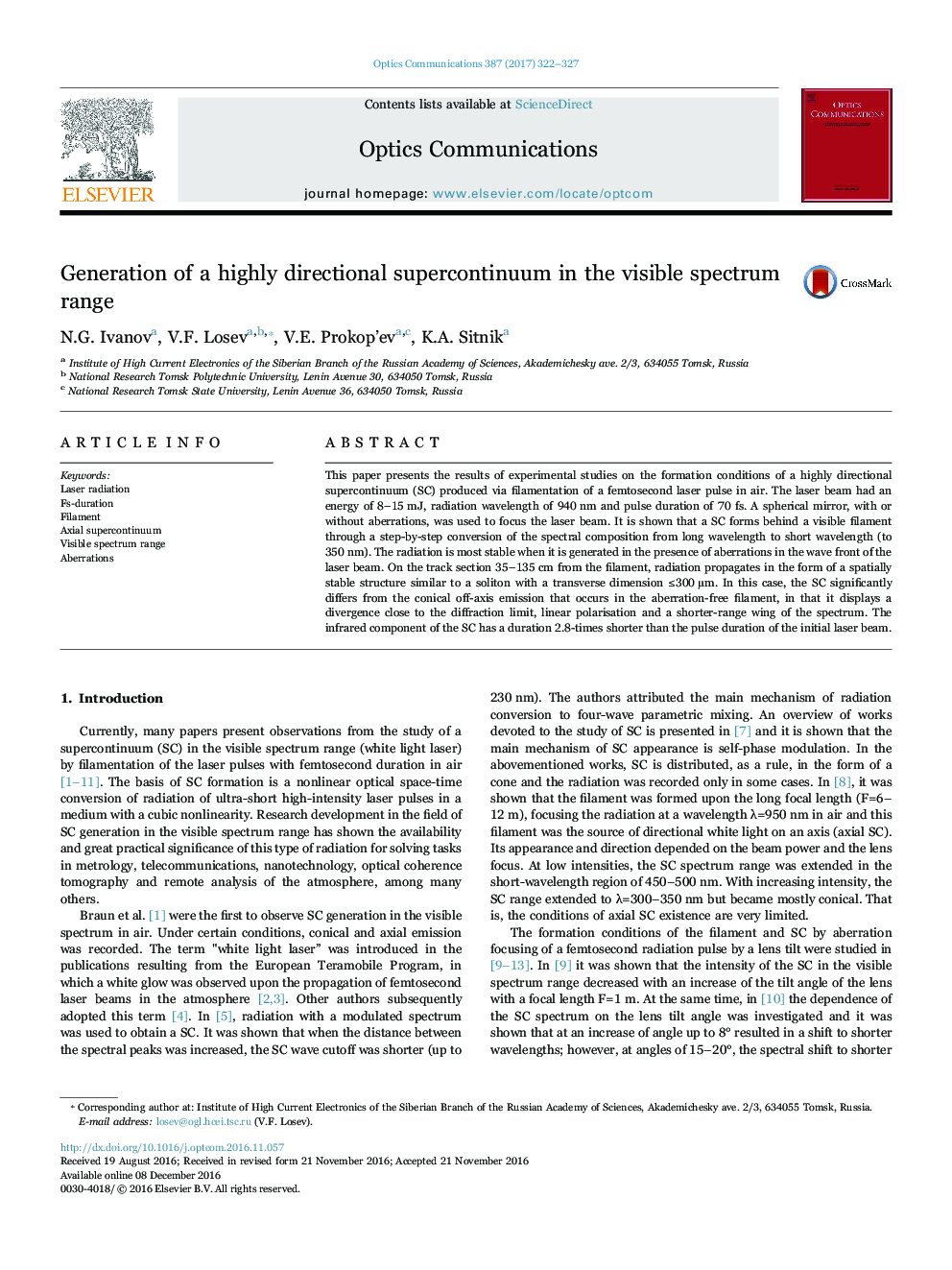| Article ID | Journal | Published Year | Pages | File Type |
|---|---|---|---|---|
| 5449726 | Optics Communications | 2017 | 6 Pages |
Abstract
This paper presents the results of experimental studies on the formation conditions of a highly directional supercontinuum (SC) produced via filamentation of a femtosecond laser pulse in air. The laser beam had an energy of 8-15 mJ, radiation wavelength of 940 nm and pulse duration of 70 fs. A spherical mirror, with or without aberrations, was used to focus the laser beam. It is shown that a SC forms behind a visible filament through a step-by-step conversion of the spectral composition from long wavelength to short wavelength (to 350 nm). The radiation is most stable when it is generated in the presence of aberrations in the wave front of the laser beam. On the track section 35-135 cm from the filament, radiation propagates in the form of a spatially stable structure similar to a soliton with a transverse dimension â¤300 µm. In this case, the SC significantly differs from the conical off-axis emission that occurs in the aberration-free filament, in that it displays a divergence close to the diffraction limit, linear polarisation and a shorter-range wing of the spectrum. The infrared component of the SC has a duration 2.8-times shorter than the pulse duration of the initial laser beam.
Keywords
Related Topics
Physical Sciences and Engineering
Materials Science
Electronic, Optical and Magnetic Materials
Authors
N.G. Ivanov, V.F. Losev, V.E. Prokop'ev, K.A. Sitnik,
